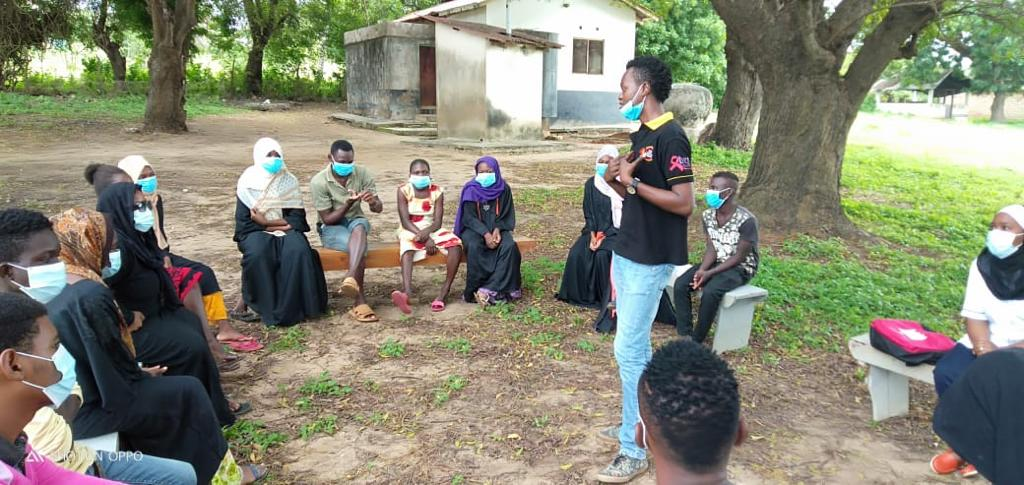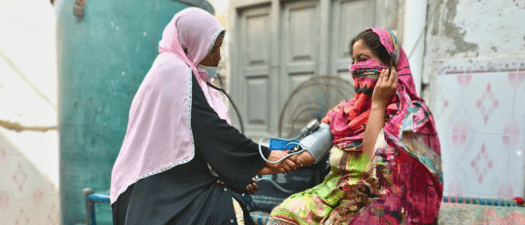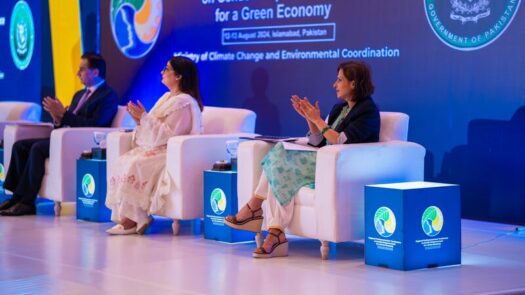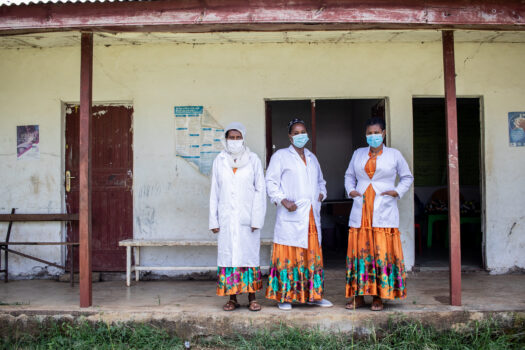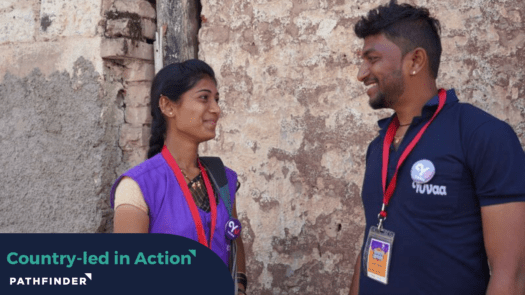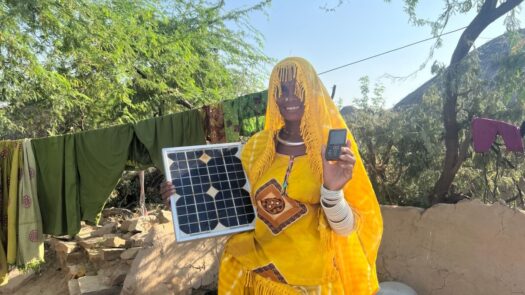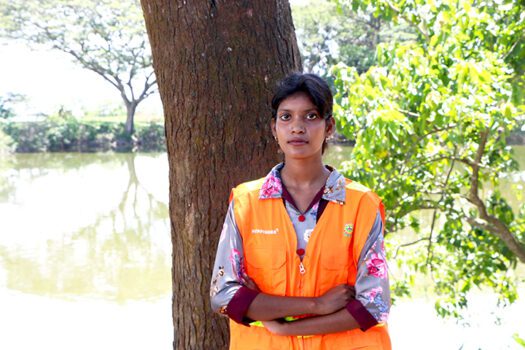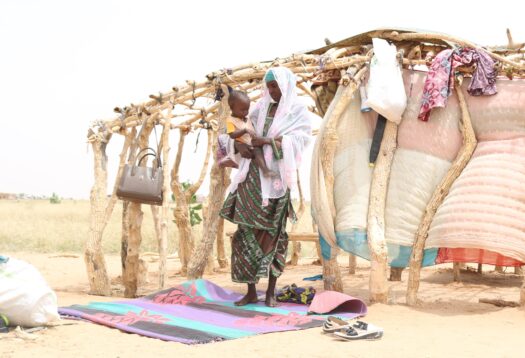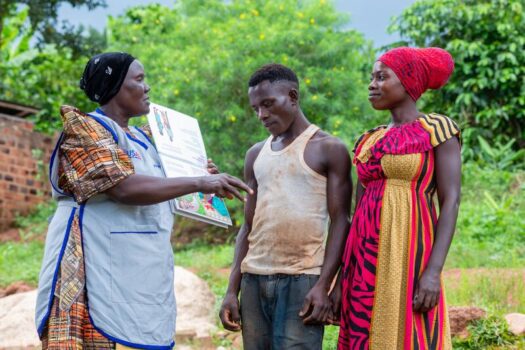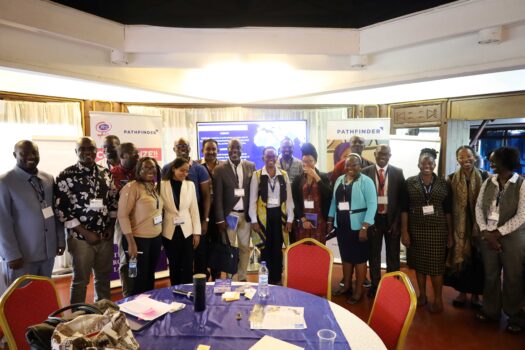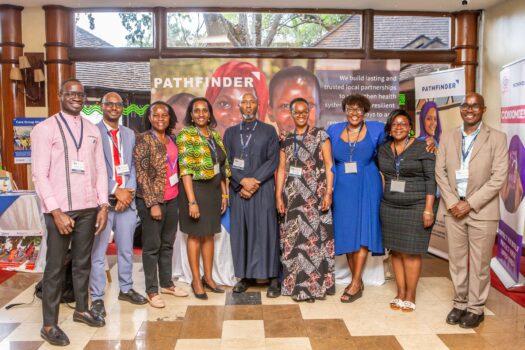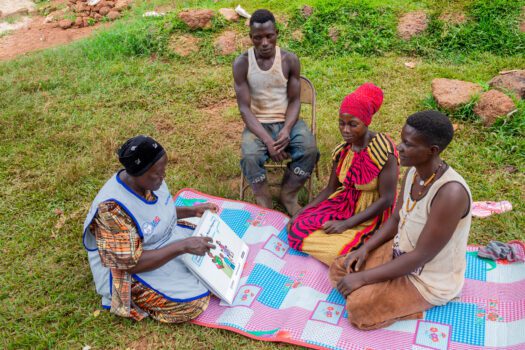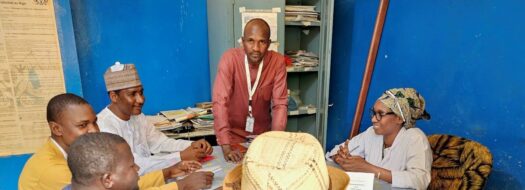In this issue of Pathways, you will learn how Pathfinder is undergoing a digital transformation, using three principles that guide our work.
Jump to: Letter from Darlene Irby | YUVAA: Digital Innovations| Mobile Mamas—The Emergency Transport System Saving Lives in Tanzania | A Digital Transformation Across Pathfinder | Pathways – Spring 2022 (PDF)
Letter from Darlene Irby
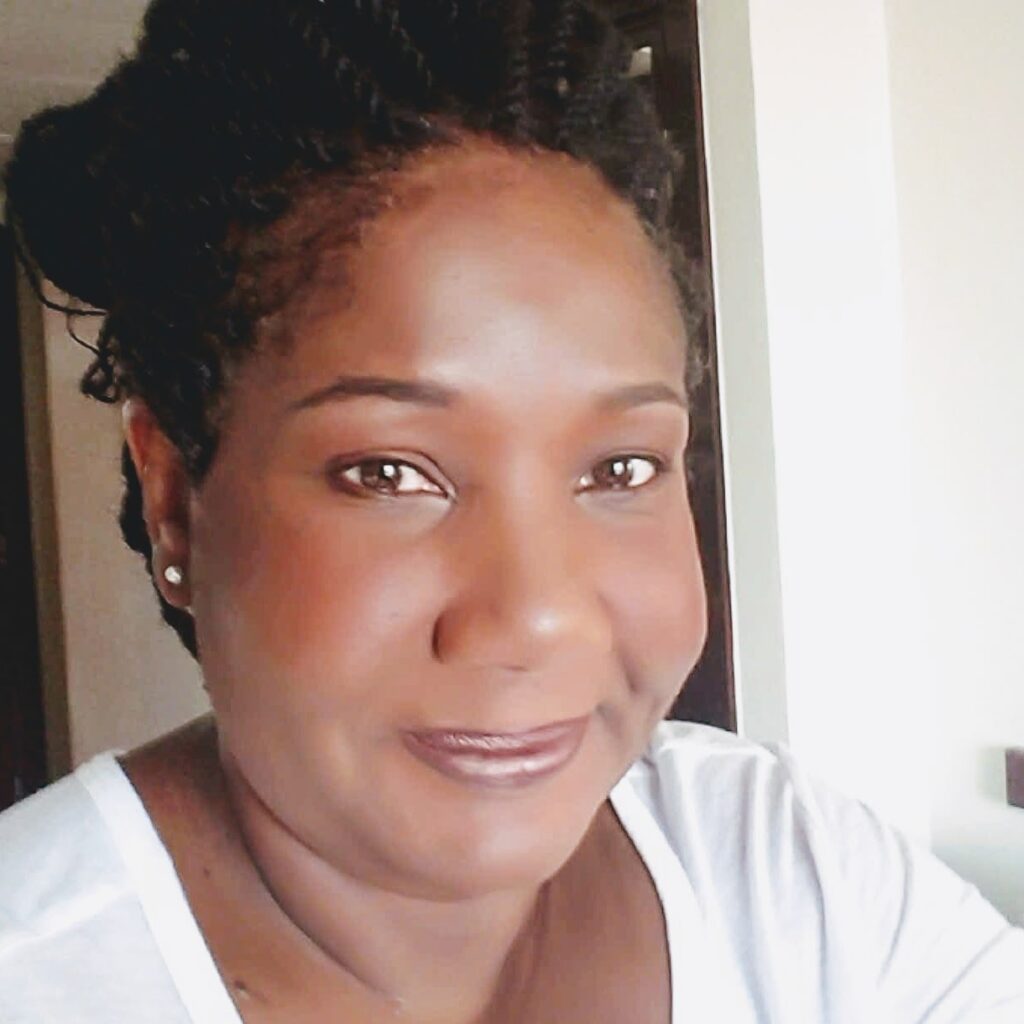
DEAR PATHFINDERS,
Around the globe, nearly everyone owns a cell phone, and more than half of people own a smart phone. For many of us, our phones aren’t just a portal for connection or entertainment—they are vaults of our health data, records, and trends. Integrated technologies have allowed us to track our steps, monitor our sleep, host vaccination passes, and they have allowed health workers worldwide to adapt, monitor, and provide services to those most in need during a global pandemic.
Digital technology, and specifically digital health, is transforming how people access, and manage, their well-being. And, phones are just one piece of the puzzle. Today, digital technologies, including cutting-edge analytics, artificial intelligence, machine learning, and even virtual reality are all being incorporated into our understanding of where digital health can bring us. But, as digital health becomes more ubiquitous, so does our need to protect those it’s meant to aid. Technology on its own is no panacea—it’s the ecosystems that surround, and bolster, our technology that will allow digital health innovation to support the health needs of our global community.
At Pathfinder, as we strengthen health systems that integrate new technologies, three principles must guide our work: a process of digital growth must be locally driven, it must be integrated with existing systems, and it must, more than anything, be sustainable.
What does a digital transformation abiding by these principles look like in practice? First, technologies should be based on what’s already in use. We don’t need to create new systems, or reinvent for the sake of innovation. We should have a ‘recycle and upcycle’ mentality, informed by local expertise, meeting countries, health systems, and health work forces where they are at.
Second, we need to break down silos. For example, if we are collecting patient data for care, we should ask if we can use that same platform for other sectors like education tracking or financial inclusion. Health systems that are siloed fail to reflect a holistic approach to health.
Third, and most importantly, whatever is created must be sustainable. Technology should not be donor dependent, nor should it disappear when a donor does. As a signatory of the Principles for Digital Development Pathfinder recognizes that if a technology is institutionalized by nongovernmental organizations, local private enterprises, and governments, then it will more likely be embedded into local policies and practices in the long-term.
In this issue of Pathways, you will learn how Pathfinder is undergoing a digital transformation, with these critical guide points in place. In India, we are using virtual reality to reach young couples with sexual and reproductive health messages, in collaboration with the Government of Bihar. In Tanzania, our mobile transport technology has saved women’s lives by engaging local resources and communities. In Nigeria, our targeted social media campaign is fighting disinformation and reaching thousands with COVID-19 vaccine information. And in Kenya, a chatbot, accessible on any phone, is teaching communities about cervical cancer.
We need to acknowledge that, at times, developing the technology is the easy part. The challenge is building the infrastructure around it to ensure that laws, policies, and capacity supports the growth at hand. To support health and save lives, we need to build in frameworks for fairness, equity, and digital security from the start. I’m thrilled with the innovative approaches that Pathfinder is undertaking, and I hope you will enjoy learning about our how our own digital transformation is evolving.
To innovation, transformation, and…sustainability!
Yours,
Darlene Irby
Executive Director of Digital Health
YUVAA: Digital Innovations Creating a Community of Successful Couples
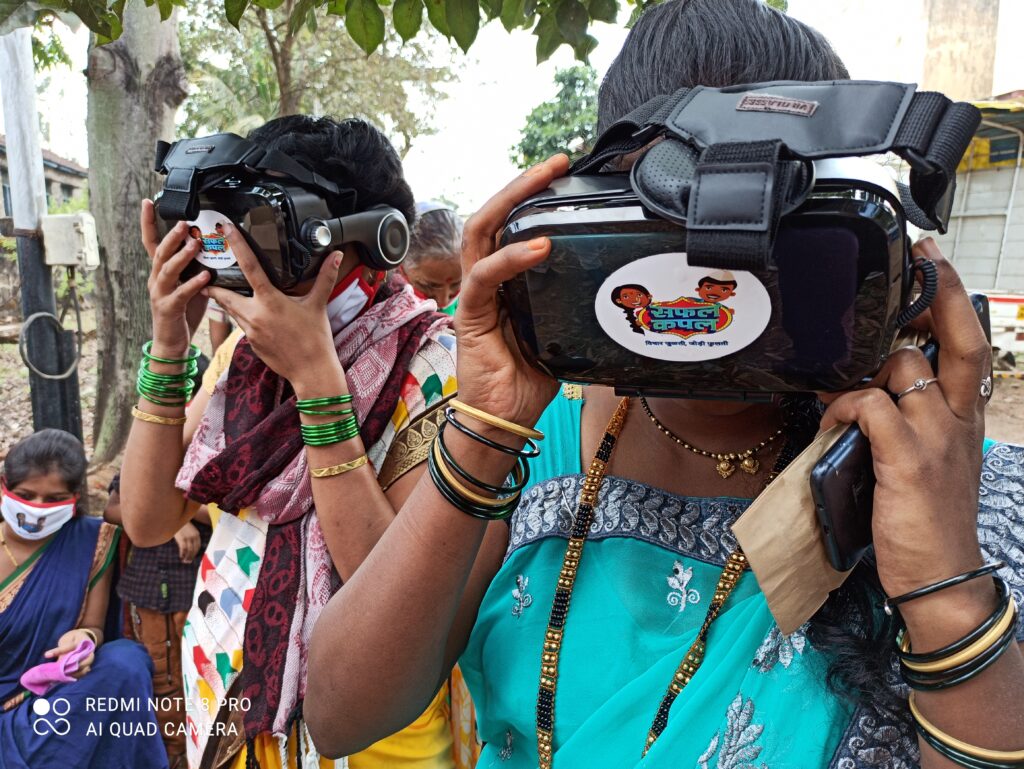
Q&A with Laxmi Rao, Sr. Director of Social Behavior Change, YUVAA Project, and Manish Mitra, YUVAA’s Project Lead and Director of India Programs
Pathfinder’s Youth Voices for Agency and Access project, or YUVAA, is working at the cutting edge of digital health integration to shift gender and social norms across select districts of Bihar and Maharashtra states in India. At its core, YUVAA works from a model of social entrepreneurship, where young couples, known as Yuvaakaars, work closely with young married couples and first-time parents at the community level, providing them with family planning counseling and contraceptive and health product services in their homes.
Yuvaakaars use digital platforms to deliver communications with the couples they reach. When COVID-19 hit, YUVAA built out its digital approaches, including tele-counseling, interactive games, behavior modeling short films, interactive virtual reality tools, and even mobile ‘talking’ projections used to engage young couples. Today, the physical and the digital are integrated into a single, powerful approach!
Q: What does digital integration look like in practice?
Pathfinder’s Yuvaakaars are couples, and these couples usually would go door-to-door to meet others in their community and talk to them about family planning, financial planning, and social norms. But when the pandemic happened, everything with YUVAA shifted into a digital format. Our Yuvaakaars couldn’t interact or meet people, and this was a challenge. So YUVAA made rapid adaptations to ensure the messages and services continued by switching to tele-counseling, developing mobile digital interactive platforms, virtual reality channels, and launching a digital campaign in villages.
Q: What did the campaign approaches entail?
The campaign was built around the concept of the ‘Safal Couple,’ which means ‘Successful Couple,’ to encourage couple communications and promote healthy timing and spacing of pregnancy. In practice, our digital integration includes a suite of interactions that start when a mobile van shows up in a community. When the van is parked, we have a projection of a talking couple that attracts people to come look. They look like talking, animated posters. A man and a woman are projected, and they are a model Safal Couple. They draw people in, saying, “My name is Ravi, and this is my wife, Rani. We are from the community you are… do you want to know our secrets, how we became a Safal Couple and how we have such a good life?” We also have digital wall paintings installed in villages we visit, which gives information about YUVAA and contact information for Yuvaakaars.
People loved these projections! It drew people in, putting huge smiles on their faces. From there, people could interact with our virtual reality platform with virtual reality headsets. With virtual reality, what we wanted was to give people a novel experience so that they can remember the interaction for a longer time. A lot of family planning messages had become commonplace and no longer stood out. We didn’t want to change the message—just the messenger by using virtual reality headsets. Our virtual reality films are short, maybe three minutes, but one advantage of the films is that they engage the audience with no distractions. The audio and visual senses are completely engaged. The virtual reality films also ensure a private viewing experience. There is both total immersion and total privacy. What you watch is your business.
Q: Tell us more about how this is integrated with other approaches.
People who interacted with our virtual reality and Safal Couples then received calendars from YUVAA. This seems simple, but we were really specific: couples that got the calendar had to put them in their bedrooms. They would always ask why, they would push back. But we would insist! Then at night, when the couple is there alone, all of the sudden, the calendar is glowing! It has YUVAA’s Safal Couple, showing up in the dark, facing the couple. It’s a reinforcement of the message in the right place, at the right time!
Q: How has the campaign leveraged social media?
The campaign used social media platforms like YouTube and Facebook, as well as WhatsApp messages as a follow-up strategy. We developed specific YouTube and Facebook pages, which were loaded with campaign posts, visuals, pictures, and behavior messages. YUVAA also sent customized SMS to people who interacted with our Safal Couples and virtual reality and left their mobile numbers for future engagement.
Q: How are the social norms aspects of family planning addressed through the campaign?
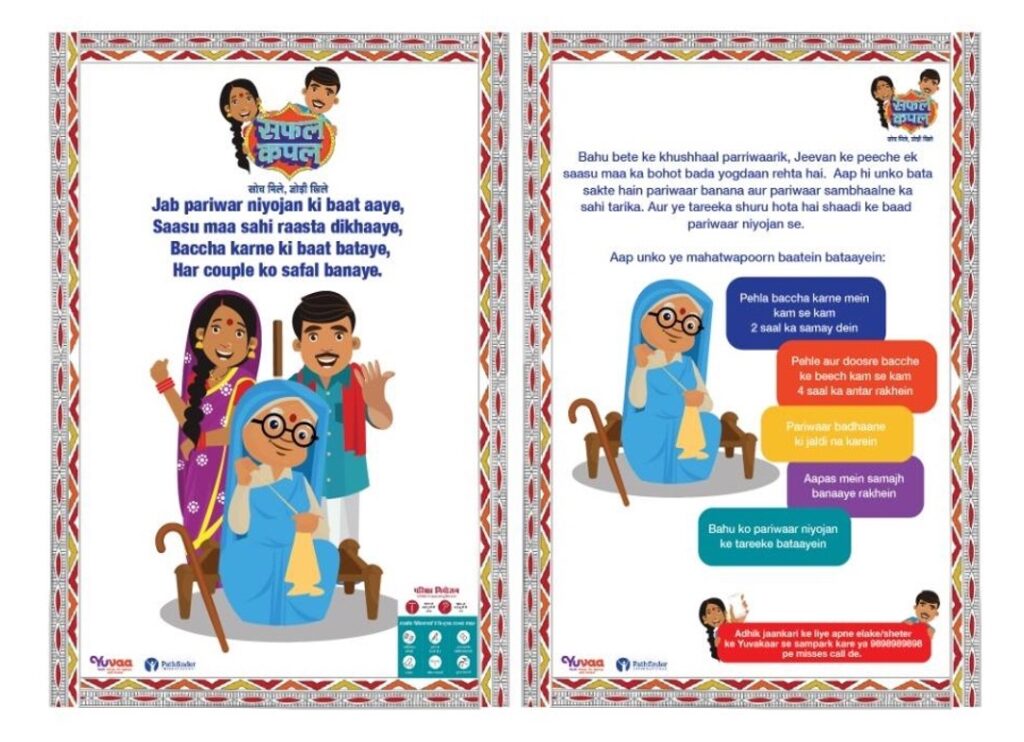
We believe mothers-in-law play a key role in the decision- making process of young married couples. Therefore, we focused on them as the secondary target audience in our campaign and positioned them as ‘Safal-Sasumaa’ or ‘Successful Mothers-in-Law’ who support newlyweds in their decision-making for family planning. We used a testimonial strategy to identify champion mothers-in-law and incorporated their interviews into motivational videos.
Across the board, we are working on integrating our Yuvaakaars and our digital platforms—from games to projections to virtual reality— and then enforcing this work through our model Safal Couples. And it’s taken hold. The government is adapting the games and films we’ve developed. When we launched, the Health Minister from Bihar came and interacted with our virtual reality activities. The local health workers support the campaign. The work is full circle, integrated, and self-reinforcing.
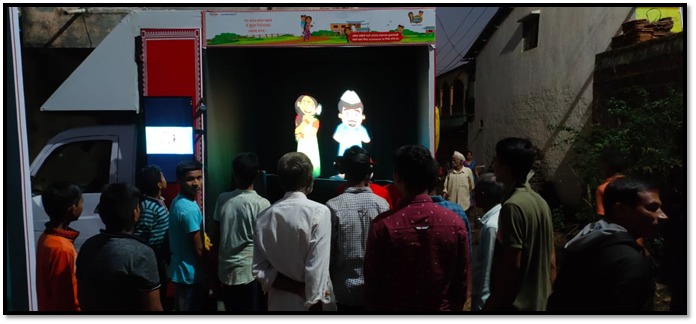
YUVAA’S SAFAL COUPLE CAMPAIGN REACH:
- 450+ villages covered.
- 97,000+ people directly participated in the campaign.
- 9,000+ calls, in three months, landed in the YUVAA Hello-Safal platform.
- 32,000+ exposed to the campaign showed intentions for further engagement with Yuvaakaars on family planning services.
- 500,000+ impressions on Facebook and YouTube.
- 1 million+ reached on SMS
Mobile Mamas — The Emergency Transport System Saving Lives in Tanzania
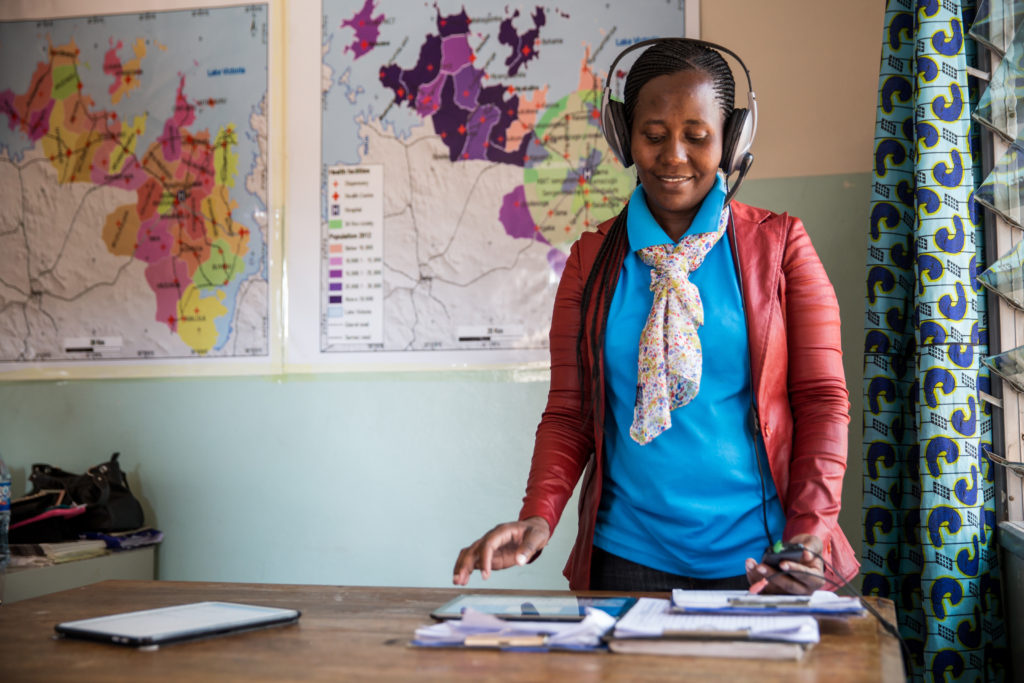
When Consolata went into labor at 28 years old, something felt wrong. She was exhausted and afraid. “I was in bad shape,” she said. In her rural district of Tanzania, there were only 10 ambulances for more than 1.5 million people—and she needed help.
That’s when Pathfinder’s Mobilizing Maternal Health Project, or m-mama for short, stepped in. A local driver was called to take Consolata to the nearest clinic. There, she gave birth to a healthy baby boy, Kurwa—and learned that she wasn’t finished! “The doctors examined me, and there was another baby.”
Consolata’s doctors decided they needed to send her to the nearest hospital, but once again, no ambulances were available. “I was so afraid… I had given birth to Kurwa, but his brother hadn’t been delivered.” An m-mama community taxi driver showed up to take Consolata to Shinyanga Regional Referral Hospital… but she couldn’t wait. Kurwa’s brother was born in the taxi, and by the time she reached the hospital, she was bleeding heavily. There, she received the critical care she needed, and today, is the mother of two healthy twins.
“I don’t know what I would have done without this transportation. Maybe I would have traveled on a bicycle,” she said, laughing. “If this service wasn’t available, I might be dead.”
Sadly, Consolata wasn’t wrong. Each year, a series of three delays contribute to hundreds of thousands maternal and neonatal emergencies. These three delays have direct impacts on mothers’ and babies’ health and survival. They are:
- Delays in making the decision to seek care
- Delays in identification of—and transport to—a medical facility
- Delays in receipt of adequate, and appropriate, care
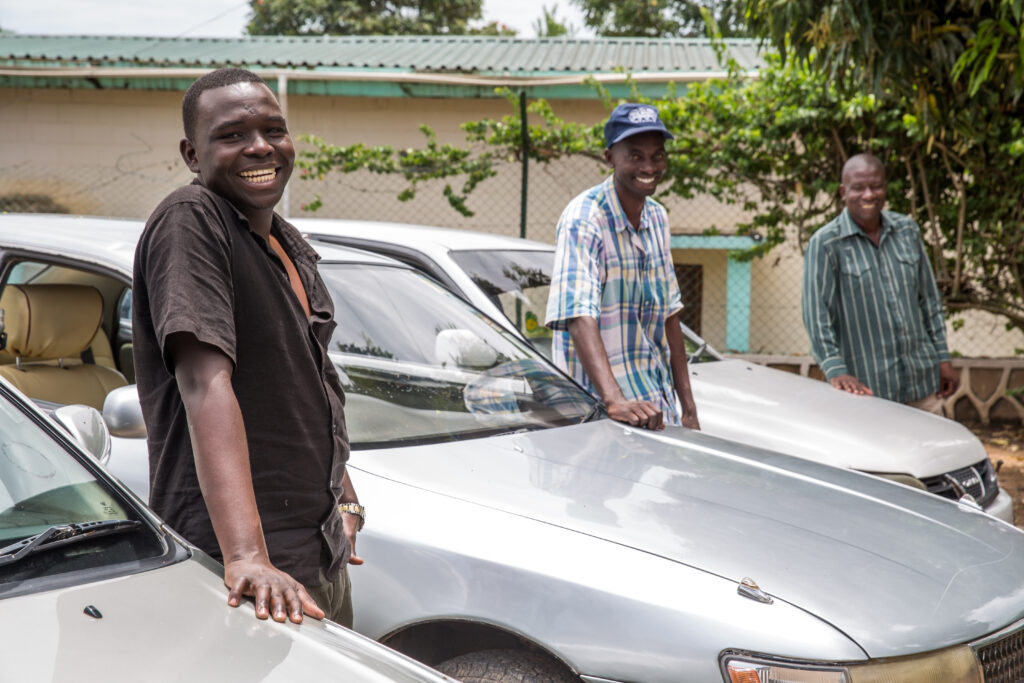
OMARI MABULA (FRONT) IS ONE OF M-MAMA’S TAXI DRIVERS WHO ARE TRANSPORTING MOTHERS TO THE CARE THEY NEED IN TANZANIA’S SENGEREMA DISTRICT.
M-mama has developed an innovative approach to address these delays in six districts of Tanzania’s Shinyanga region: engage communities, provide emergency transport for mothers and babies, and strengthen the local health systems so when mothers and babies arrive at a health facility, they receive the quality care they need. This approach is saving lives.
Jidinda is one of the drivers working with m-mama. “I think there were a lot of unnecessary deaths,” he said. “A lot of mothers were giving birth at home, because they had no way to get to the hospital.”
More than that, even if transport was available, women couldn’t afford it. Pathfinder’s program worked to solve these challenges through a series of steps. First, m-mama developed community care groups, where community facilitators conduct monthly meetings with groups of pregnant and postpartum women. Facilitators in the groups ensured that all women had access to the toll-free number developed for the emergency transportation system and identified women exhibiting danger signs during their pregnancies.
Next, Pathfinder ensured that when women needed care, they could get to local health facilities. To do this, m-mama first developed a dispatch center. This involved developing a mobile application in partnership with Vodafone, setting toll-free numbers for users and drivers, and recruiting and training dispatchers. M-mama engaged a network of local community taxi drivers in places where ambulances weren’t readily available. Expectant moms—or their families and neighbors—can now make toll-free calls 24/7 to a local dispatch center, where dispatchers assess the patient’s condition using the “m-mama App,” which the project designed to determine what kind of care the patient needed.
For Agnes, this dispatch center was the reason she delivered a healthy baby. “The dispatcher called me to pick up one mother who was unconscious,” said Jidinda. “But… we got her to the hospital on time.” Today, Agnes and her baby are both doing well, due to the quick dispatch, and the fact that Jidinda lives in the same community.
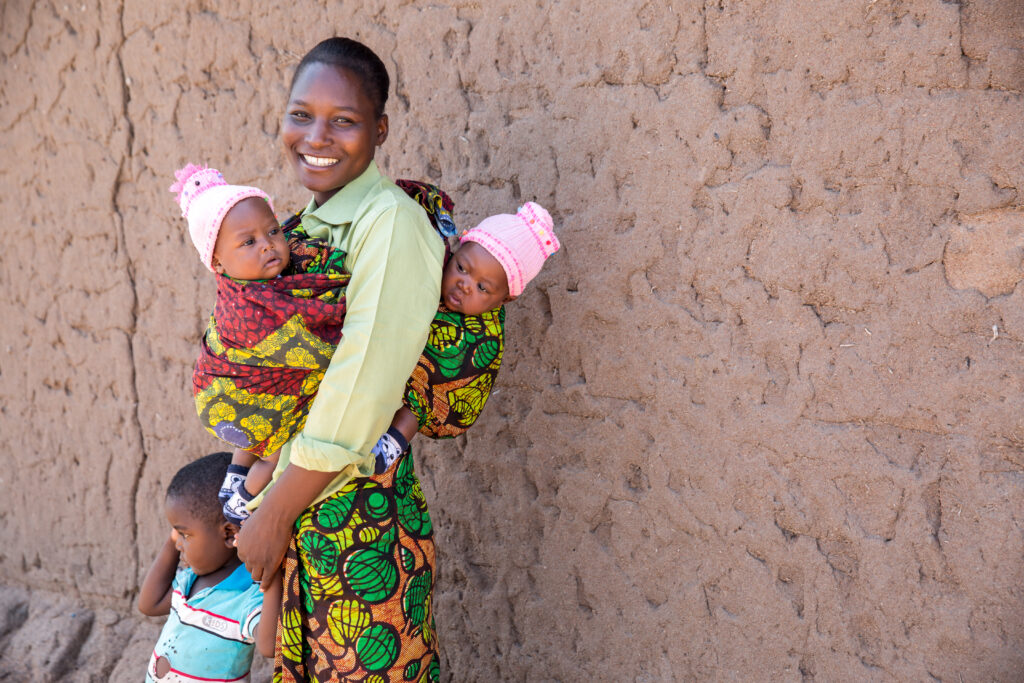
CONSOLATA LIVES IN RURAL TANZANIA, IN A REGION WITH 10 AMBULANCES FOR MORE 1.5 MILLION PEOPLE. WHEN SHE WENT INTO A DIFFICULT LABOR, PATHFINDER’S PROGRAM HELPED GET HER TO THE CLINIC—AND THEN TO A HOSPITAL WHERE THEY SAVED HER LIFE.
To ensure the best outcomes, dispatchers participate in detailed trainings on maternal and newborn health and triaging difficult cases from the m-mama program staff. If it is determined that care is required, the nearest ambulance driver or community taxi driver is identified on the app, and they receive a request to take the woman to the closest health facility.
Before the inception of m-mama, taxi drivers would often refuse to transfer patients, as rates were negotiable and couldn’t be agreed upon. M-Mama addressed this challenge by setting pre-negotiated rates and paying taxi drivers directly upon completion of their trips.
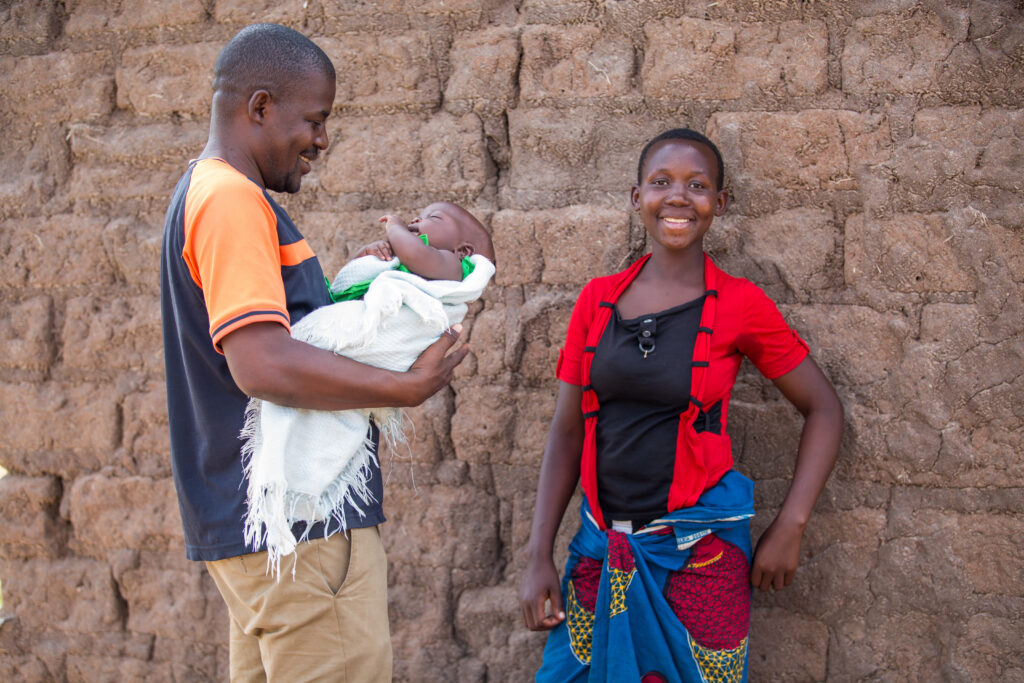
For Jidinda, it means getting paid on time, and helping his community. For Consolata and Agnes, it meant delivering healthy babies, and getting the care they needed when their deliveries put their lives in danger. And, for the community, it means less maternal and neonatal deaths. By integrating a mobile application, centralized dispatch centers, and community engagement to raise awareness , the m-mama program is having significant impacts.
Today, m-mama is up and running in all six districts of Tanzania’s Shinyanga region, and is providing life-saving care to more than 140,000 women in the facilities supported by the program. “It has an added benefit,” said Jidinda. “It brought me closer to my community.”
In the next six years, the program will be scaled to 14 additional districts in Shinyanga.
M-MAMA RESULTS
- Six toll-free numbers established for m-mama users, with 10 billboards displaying the numbers in the Shinyanga region.
- 30,000 leaflets and 800 posters distributed about the program.
- 3 Neonatal Intensive Care Units established.
- 12,700 women & newborns provided with emergency transport.
- 200 drivers registered in the system.
- 1,605 community care group meetings conducted in 46 villages by 86 facilitators, reaching 8,016 women with sexual and reproductive health information.
- Ensured sustainability:
- Year 1: Project paid 100% of community taxi costs
- Year 2: Project paid 50% and government paid 50%
- Year 3: Government paid 100% of community taxi costs
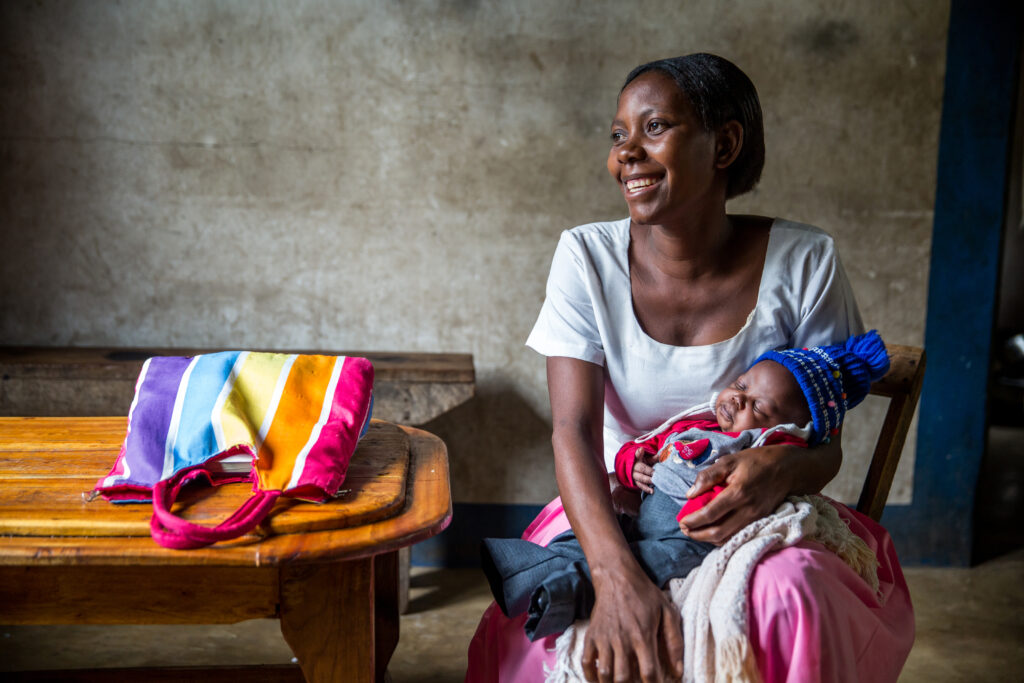
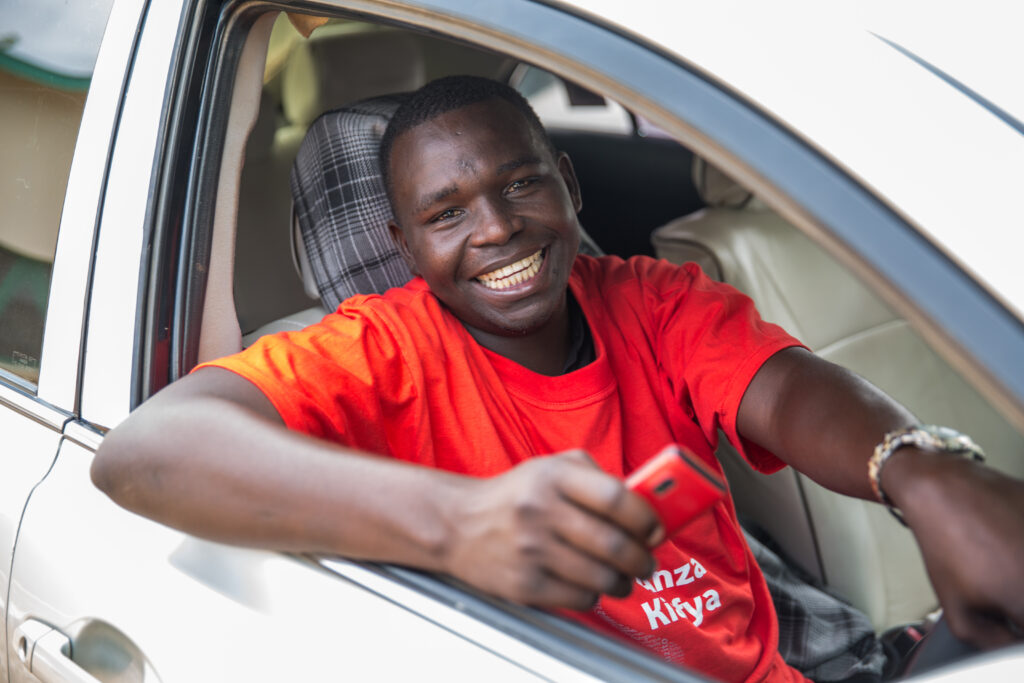
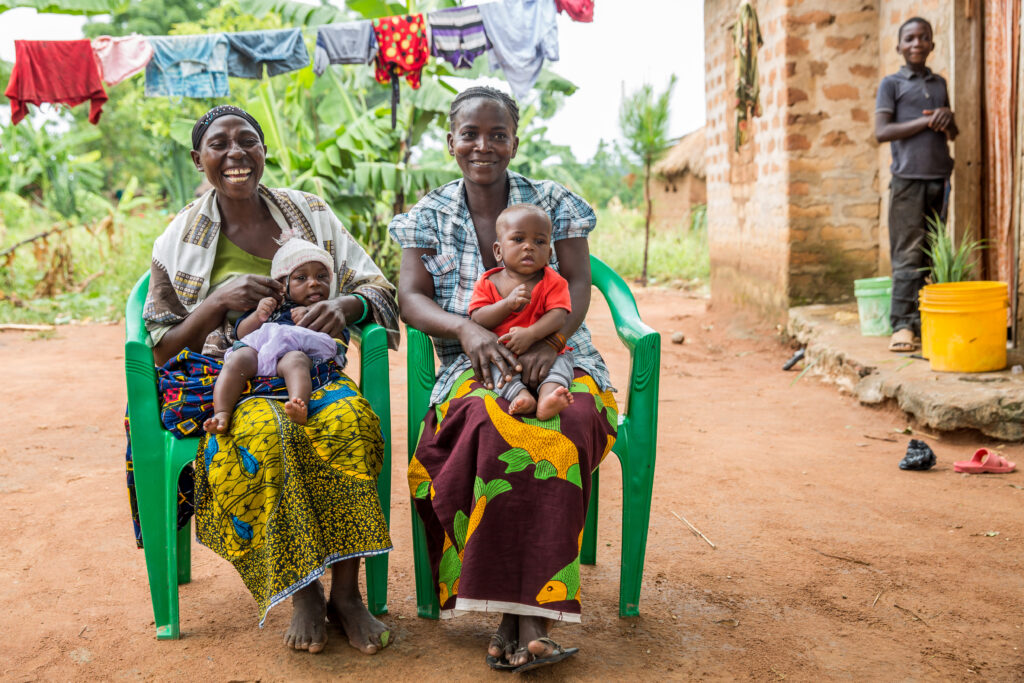
A Digital Transformation Across Pathfinder
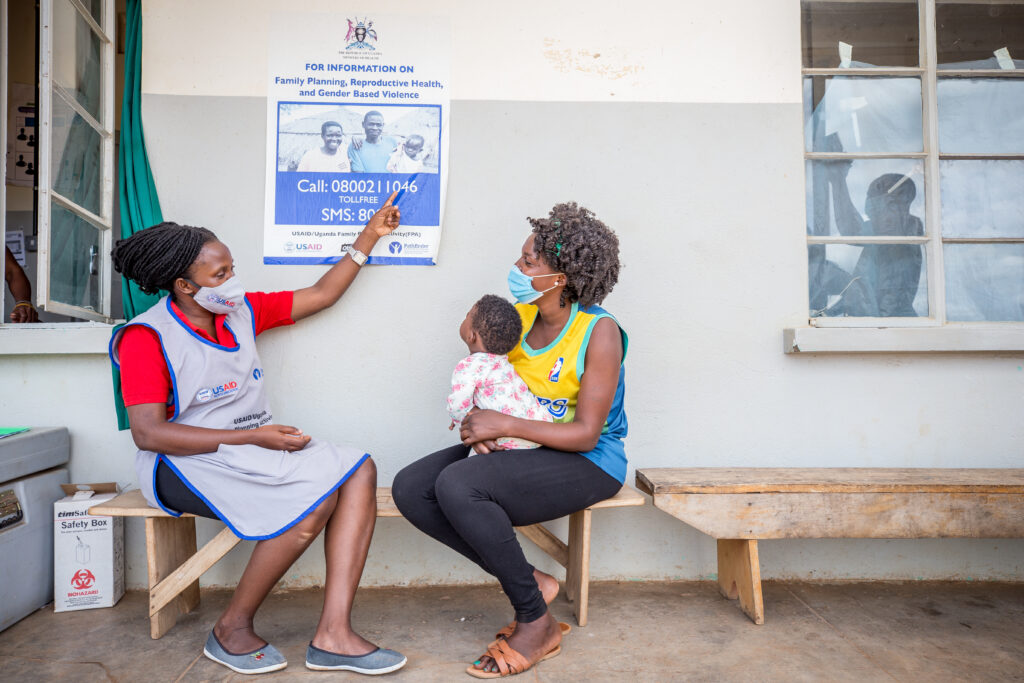
NIGERIA
Pathfinder has undertaken a campaign to fight COVID-19 vaccine hesitancy. So far, we’ve reached more than 30,000 Nigerians with our messages, fighting dangerous vaccine misinformation, dispelling myths, and helping Nigeria to reach its goal of vaccinating over half its population in the next two years.
UGANDA
A free hotline and SMS code is providing information, education, counseling, and referrals across our “Family Planning Activity” program areas. In the last year, the program reached 5,426 individuals through the hotline and SMS platforms, the majority (47%) of whom were ages 10–24.
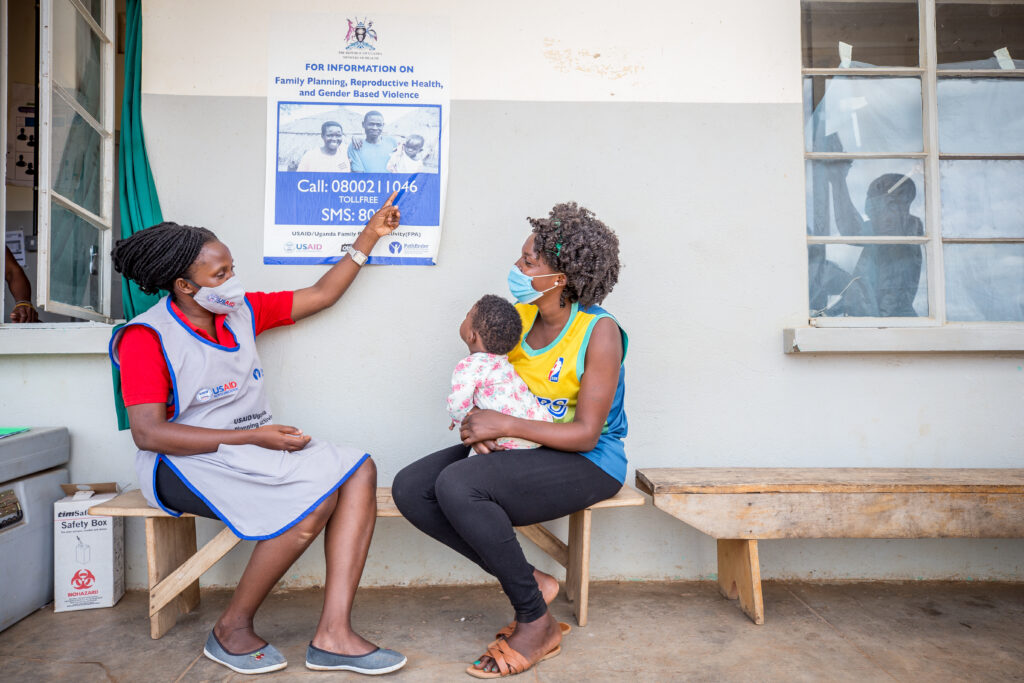
KENYA
Pathfinder’s ‘askNivi’ chatbot is building aware- ness about cervical cancer prevention and HPV vaccination. Over four months, the campaign reached 160,800 people. After interacting with the app, users demonstrated significant knowledge about HPV (65.6%), readiness to get HPV screenings (91.6%), and vaccination (56.2%).
